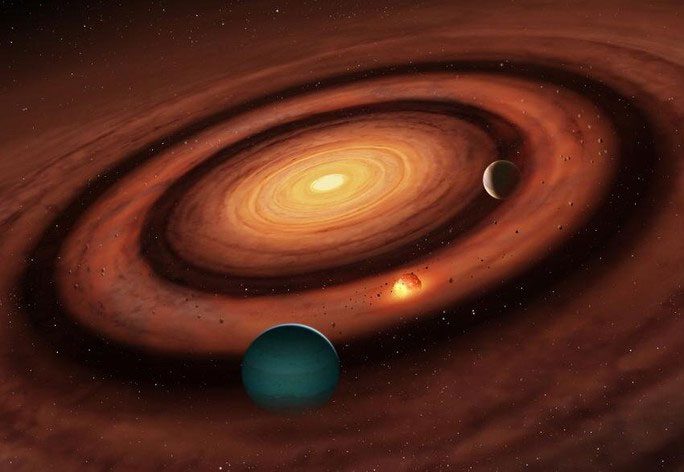British scientists have discovered a completely new way for planets to form in the universe: not as “children” of a star, but as offspring of two larger planets.
According to the scientific journal PHYS, researchers from the University of Warwick (UK) have investigated the “birth environment” of planets, which refers to the gas and dust-filled region swirling around a star, also known as the protoplanetary disk.
The model, based on studies and observations of known protoplanetary disks, suggests that some smaller planets in star systems may not be direct “children” of the parent star.

Scientists discover a completely new way a planet can be born – (Photo: UNIVERSITY OF WARWICK).
Instead, two larger and earlier-forming planets could shape the dust flow between them, gradually “molding” a smaller planet in a process known as “planetary wedging.”
This provides a plausible explanation for the formation of smaller planets that has puzzled scientists for many years.
“Over the past decade, observations have revealed that gaps and rings exist within protoplanetary disks. The gaps are where we expect planets to be, and we also know that planets create dust rings forming just outside them,” explained Associate Professor Dorothy Hodgkin, the lead researcher.
The dynamics occurring within those rings have raised questions among astronomers worldwide, and the aforementioned model is the answer, although scientists hope to capture direct evidence from a young star system in the future.
Based on this model, our Solar System has two planets that scientists suspect formed in this way: Mars and Uranus.
This means our Earth has a “shared child” with Jupiter, which is also one of the four brightest planets “dancing” alongside the waning supermoon at the beginning of July. You can easily spot Mars due to its distinct red color, visible even to the naked eye.


















































